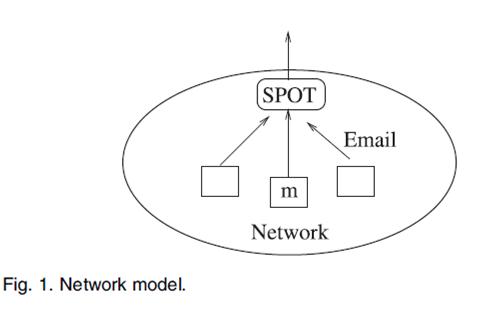Facilitating Document
Annotation using Content and Querying Value
ABSTRACT:
A large number of organizations today generate and share
textual descriptions of their products, services, and actions. Such collections
of textual data contain significant amount of structured information, which
remains buried in the unstructured text. While information extraction
algorithms facilitate the extraction of structured relations, they are often
expensive and inaccurate, especially when operating on top of text that does
not contain any instances of the targeted structured information. We present a
novel alternative approach that facilitates the generation of the structured metadata
by identifying documents that are likely to contain information of interest and
this information is going to be subsequently useful for querying the database.
Our approach relies on the idea that humans are more likely to add the
necessary metadata during creation time, if prompted by the interface; or that
it is much easier for humans (and/or algorithms) to identify the metadata when
such information actually exists in the document, instead of naively prompting
users to fill in forms with information that is not available in the document.
As a major contribution of this paper, we present algorithms that identify structured
attributes that are likely to appear within the document, by jointly utilizing
the content of the text and the query workload. Our experimental evaluation
shows that our approach generates superior results compared to approaches that
rely only on the textual content or only on the query workload, to identify
attributes of interest.
EXISTING SYSTEM:
Many annotation systems allow only “untyped” keyword
annotation: for instance, a user may annotate a weather report using a tag such
as “Storm Category 3”. Annotation strategies that use attribute-value pairs are
generally more expressive, as they can contain more information than untyped
approaches. In such settings, the above information can be entered as (StormCategory,3).
A recent line of work towards using more expressive queries that leverage such
annotations, is the “pay- as-you-go” querying strategy in Dataspaces [2]: In
Dataspaces, users provide data integration hints at query time. The assumption in
such systems is that the data sources already contain structured information
and the problem is to match the query attributes with the source attributes. Many
systems, though, do not even have the basic “attribute-value” annotation that
would make a “pay-as-you go” querying feasible. Annotations that use
“attribute-value” pairs require users to be more principled in their annotation
efforts. Users should know the underlying schema and field types to use; they
should also know when to use each of these fields. With schemas that often have
tens or even hundreds of available fields to fill, this task become complicated
and cumbersome. This results in data entry users ignoring such annotation
capabilities.
DISADVANTAGES
OF EXISTING SYSTEM:
·
The cost is high for creation of
annotation information.
·
The existing system produces some errors
in the suggestions.
PROPOSED SYSTEM:
In this paper, we propose CADS (Collaborative
Adaptive Data Sharing platform), which is an “annotate-as-you create” infrastructure
that facilitates fielded data annotation. A key contribution of our system is
the direct use of the query workload to direct the annotation
process, in addition to examining the content of the document. In other words, we
are trying to prioritize the annotation of documents towards generating
attribute values for attributes that are often used by querying users. The
goal of CADS is to encourage and lower the cost of creating nicely annotated
documents that can be immediately useful for commonly issued semi-structured
queries such as the ones. Our key goal is to encourage the annotation of the
documents at creation time, while the creator is still in the “document
generation” phase, even though the techniques can also be used for post generation
document annotation. In our scenario, the author generates a new document and
uploads it to the repository. After the upload, CADS analyzes the text and
creates an adaptive insertion form. The form contains the best attribute names
given the document text and the information need (query workload), and the most
probable attribute values given the document text. The author (creator) can
inspect the form, modify the generated metadata as- necessary, and submit the
annotated document for storage.
ADVANTAGES
OF PROPOSED SYSTEM:
·
We present an adaptive technique for
automatically generating data input forms, for annotating unstructured textual
documents, such that the utilization of the inserted data is maximized, given
the user information needs.
·
We create principled probabilistic
methods and algorithms to seamlessly integrate information from the query
workload into the data annotation process, in order to generate metadata that
are not just relevant to the annotated document, but also useful to the users
querying the database.
·
We present extensive experiments with
real data and real users, showing that our system generates accurate
suggestions that are significantly better than the suggestions from alternative
approaches.
SYSTEM CONFIGURATION:-
HARDWARE CONFIGURATION:-
ü Processor - Pentium –IV
ü Speed - 1.1
Ghz
ü RAM - 256
MB(min)
ü Hard Disk -
20 GB
ü Key Board -
Standard Windows Keyboard
ü Mouse - Two
or Three Button Mouse
ü Monitor - SVGA
SOFTWARE CONFIGURATION:-
ü Operating System : Windows XP
ü Programming Language :
JAVA
ü Java Version :
JDK 1.6 & above.
REFERENCE:
Eduardo J. Ruiz, Vagelis Hristidis and , Panagiotis
G. Ipeirotis “Facilitating Document Annotation using Content and Querying
Value”- IEEE TRANSACTIONS ON KNOWLEDGE
AND DATA ENGINEERING, 2013.




